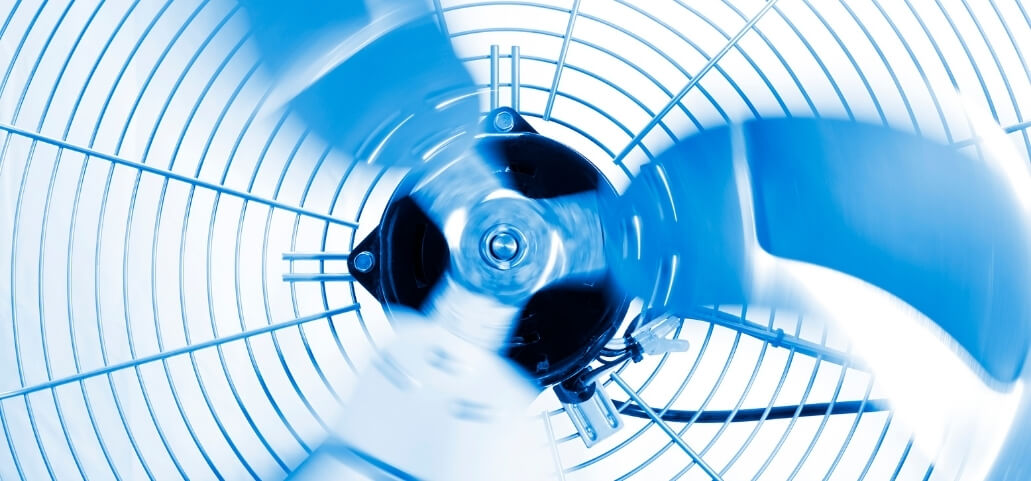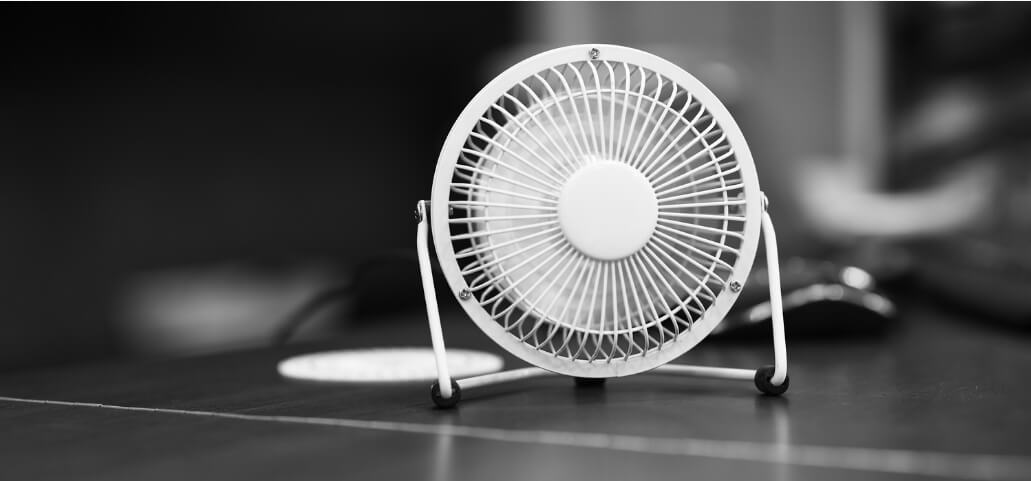Curious about how long can an electric fan run continuously? Understanding the endurance of your fan during continuous operation is crucial for its optimal performance. In this guide, we’ll delve into the factors affecting the run time of electric fans, safety considerations, and practical tips to help you maximize their longevity. Let’s explore how long can an electric fan run continuously without risking overheating or damage.
Factors Affecting How Long Can an Electric Fan Run Continuously
An electric fan’s continuous operating duration may be influenced by the following factors:
Power Rating:
A key factor in an electric fan’s ability to run continuously is its wattage. Higher wattage fans can usually run for longer periods of time without overheating since their motors are more powerful. Understanding the power rating helps users gauge the fan’s energy consumption and its suitability for prolonged use.
Motor Type and Quality:
The efficiency and quality of the fan’s motor significantly impact its ability to run continuously. Motors designed with higher-quality materials and better engineering tend to withstand extended operation without experiencing excessive wear and tear. A well-built motor not only contributes to the fan’s durability but also affects its energy efficiency, enhancing its ability to function for longer periods.
Overheating Risks:
Prolonged operation of an electric fan can pose potential dangers, primarily related to overheating. Continuous use without proper ventilation or in hot environments might cause the motor to overheat, leading to reduced performance or even damage. If you want to take the required safety measures, you must first understand these hazards. Users should ensure adequate airflow around the fan and avoid blocking its vents to prevent overheating. Regular maintenance, such as cleaning accumulated dust and debris, also helps mitigate overheating risks, ensuring safe and efficient fan operation.
Types of Electric Fans and Their Durability

Here’s a comprehensive breakdown of various types of electric fans and their durability concerning continuous operation:
Ceiling Fans:
These fans are commonly installed in homes and have a good capacity for continuous operation. Their design, with blades suspended from the ceiling, allows for efficient airflow and circulation. Ceiling fans often have long-lasting motors that can run nonstop for long periods of time without getting too hot. Proper installation and regular maintenance contribute to their longevity and ability to run consistently without significant issues.
Pedestal Fans:
Pedestal fans, with their adjustable height and oscillating features, offer flexibility and convenience. When considering extended use, factors such as motor quality and fan blade design play a significant role in their durability during continuous operation. Well-built pedestal fans equipped with sturdy motors and quality materials tend to handle prolonged usage better, provided they are maintained properly.
Tower Fans:
Because of their contemporary style and efficient airflow dispersion, these compact fans are a popular choice. Factors affecting their run time include motor efficiency and the fan’s overall construction. Tower fans with efficient motors and well-designed ventilation systems tend to endure prolonged operation without overheating. However, blocked vents or insufficient airflow can impact their ability to run continuously.
Box Fans:
Known for their affordability and versatility, box fans come in various sizes and designs. Their endurance during continuous operation depends on motor quality, blade design, and ventilation. Higher-quality box fans equipped with efficient motors and proper ventilation systems can handle prolonged use more effectively. Regular cleaning to prevent dust buildup and ensuring adequate airflow contribute to their durability.
Understanding the specific characteristics and considerations for each type of how long can an electric fan run continuously—ceiling, pedestal, tower, and box fans—helps users make informed decisions regarding their continuous operation. Factors such as motor quality, design, ventilation, and maintenance significantly influence the durability and prolonged performance of these fans.
Tips to Extend Fan Run Time

Here are detailed tips to extend the run time of an electric fan:
Proper Ventilation:
Ensuring adequate airflow around the fan is crucial for its continuous and efficient operation. Avoid placing the fan in cramped spaces or obstructing its airflow with objects or furniture. Adequate ventilation helps prevent the motor from overheating, thereby prolonging the fan’s run time. Placing the fan in an open area or ensuring that it has enough space to circulate air effectively can significantly contribute to its longevity.
Maintenance:
To keep the fan running smoothly and for longer, regular cleaning and maintenance are required. Dust, dirt, and debris can accumulate on the fan blades, grills, and motor, hindering airflow and causing the motor to strain. Dust can collect on fan blades, grills, and vents, so it’s important to clean them periodically using a gentle brush or cloth. Additionally, lubricate the fan’s moving parts as per the manufacturer’s recommendations to ensure smooth operation and reduce wear and tear on the motor.
Usage Recommendations:
Following best practices can significantly prolong the fan’s lifespan. Avoid running the fan continuously for excessively long periods, as this might put undue strain on the motor and components. Instead, consider giving the fan occasional breaks to prevent overheating. Operating the fan at lower speeds when maximum airflow isn’t necessary can also reduce wear on the motor. Furthermore, adhere to the manufacturer’s guidelines regarding usage and recommended run times for optimal performance and longevity.
Implementing these tips—ensuring proper ventilation, regular maintenance, and following usage recommendations—can significantly extend the run time and lifespan of an electric fan. By maintaining adequate airflow, keeping the fan clean, and following usage guidelines, users can enjoy prolonged and efficient operation while minimizing the risk of motor strain or damage.
Safety Concerns and Precautions

Here is a detailed overview of safety concerns and precautions related to prolonged use of electric fans:
Fire Hazards:
Prolonged use of electric fans poses potential fire hazards, especially when fans are left unattended or operated in environments with flammable materials nearby. The motor and internal components of a fan can heat up during extended use, increasing the risk of overheating. Accumulated dust or debris in the fan can also ignite under certain conditions. As a precaution, keep the fan at least a safe distance from any flammable items, such drapes, papers, or beds. Maintaining a clean fan can help keep it free of dust and other fire threats.
Electrical Safety:
Practicing electrical safety measures is crucial to prevent accidents or damage how long can an electric fan run continuously. Before using the fan, check the cable and plug to make sure they are in excellent shape and not damaged. Avoid overloading electrical outlets by plugging multiple devices into a single socket, which can lead to overheating and pose a fire risk. Use surge protectors or circuit breakers to safeguard against power surges and potential electrical hazards. Additionally, never touch the fan with wet hands or operate it near water to prevent electrical shocks.
Overheating Prevention:
Preventing fan motor burnout due to overheating is essential for safe and prolonged operation. To avoid motor burnout, ensure proper ventilation around the fan to dissipate heat effectively. Avoid covering the fan or blocking its vents, as restricted airflow can cause the motor to overheat. Additionally, adhere to the manufacturer’s guidelines regarding recommended usage times and avoid continuous operation beyond the specified limits to prevent motor strain and overheating.
Electric fans must be operated safely and efficiently, thus it is important to be aware of these risks and take the appropriate measures. By following these guidelines—such as preventing fire hazards by keeping the fan away from flammable materials, practicing electrical safety measures, and preventing motor overheating—users can enjoy the benefits of their electric fans while minimizing potential risks and hazards.
Real-Life Scenarios and Practical Recommendations

Here’s an in-depth exploration of real-life scenarios, practical recommendations, and expert insights regarding the continuous operation of electric fans:
Ideal Continuous Run Time:
General guidelines for different fan types vary based on their design, motor efficiency, and intended use. For ceiling fans, continuous operation is generally considered safe as they’re designed for longer run times, often operating efficiently for 24 hours or more if properly maintained. Pedestal and tower fans are suitable for continuous use but may benefit from intermittent breaks to prevent overheating, with recommended run times ranging from 8 to 12 hours per day. Box fans, while versatile, might be best operated for 8 to 12 hours, allowing for intervals to prevent motor strain.
Case Studies:
Instances of prolonged fan use can offer insights into outcomes. In some cases, users who ran their fans continuously without breaks reported reduced performance or motor failure due to overheating. However, those who followed manufacturer recommendations for intermittent operation or allowed sufficient ventilation reported prolonged fan lifespans and efficient performance.
Expert Insights:
Professionals recommend adhering to manufacturer guidelines for fan operation duration. Their major points are to keep the fan motor from being overworked and to ensure enough ventilation and maintenance. Experts suggest periodic breaks for fans to cool down, especially for non-ceiling fan types, to prevent overheating and extend their lifespan. Additionally, they advise users to consider the environment’s temperature and humidity, as higher ambient temperatures might require shorter continuous operation periods to prevent motor stress.
Conclusion
In conclusion, understanding the continuous operation capabilities of how long can an electric fan run continuously is essential for their efficient and safe use. Factors such as power rating, motor quality, and proper maintenance significantly impact their run time. By following manufacturer guidelines, ensuring proper ventilation, and practicing regular maintenance, users can extend the fan’s lifespan and enjoy optimal performance. Keeping safety precautions in mind, users can strike a balance between usage duration and fan longevity, enhancing their experience while maintaining safety standards.
Frequently Asked Questions
Q1. How long can electric fans run continuously without stopping?
Answer: Electric fans can typically run continuously for 24 hours or more without restrictions, especially ceiling fans designed for longer operation periods. Overheating can ruin performance, therefore it’s best to take short breaks every so then.
Q2: What factors affect the continuous run time of electric fans?
Answer: Factors include the fan’s power rating, motor type and quality, proper ventilation, and adherence to manufacturer guidelines for usage.
Q3: Are there risks associated with prolonged use of electric fans?
Answer: Yes, risks include fire hazards, potential overheating leading to motor damage, and electrical safety concerns if not used properly or maintained adequately.
Q4: How can I extend the run time of my electric fan?
Answer: Maintaining proper ventilation, regular cleaning for upkeep, and following usage recommendations can help extend an electric fan’s run time.
Q5: What's the recommended continuous run time for different types of electric fans?
Answer: Ceiling fans are designed for longer operation, while pedestal, tower, and box fans benefit from intermittent breaks, typically ranging from 8 to 12 hours per day to prevent overheating and maintain performance.

